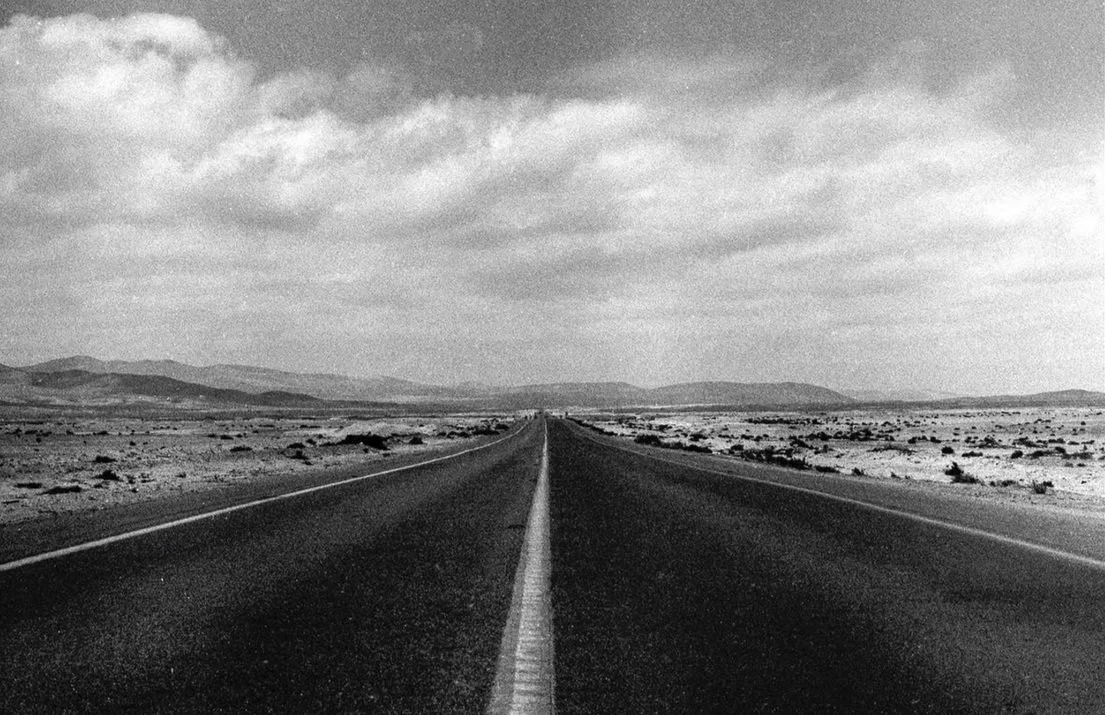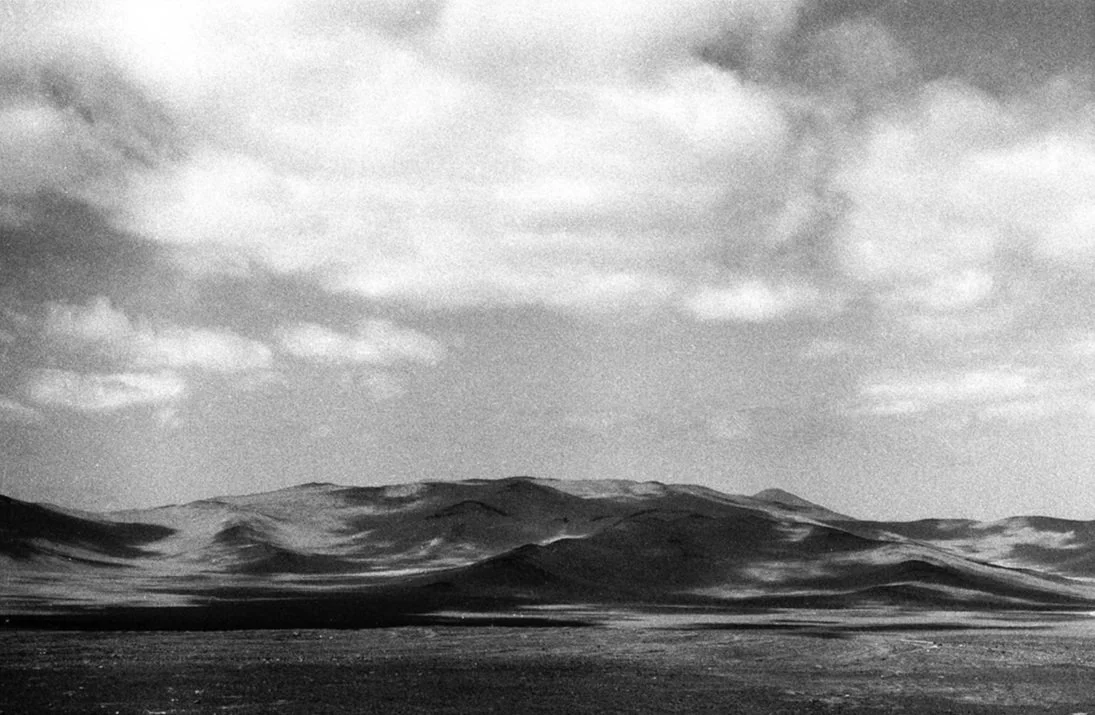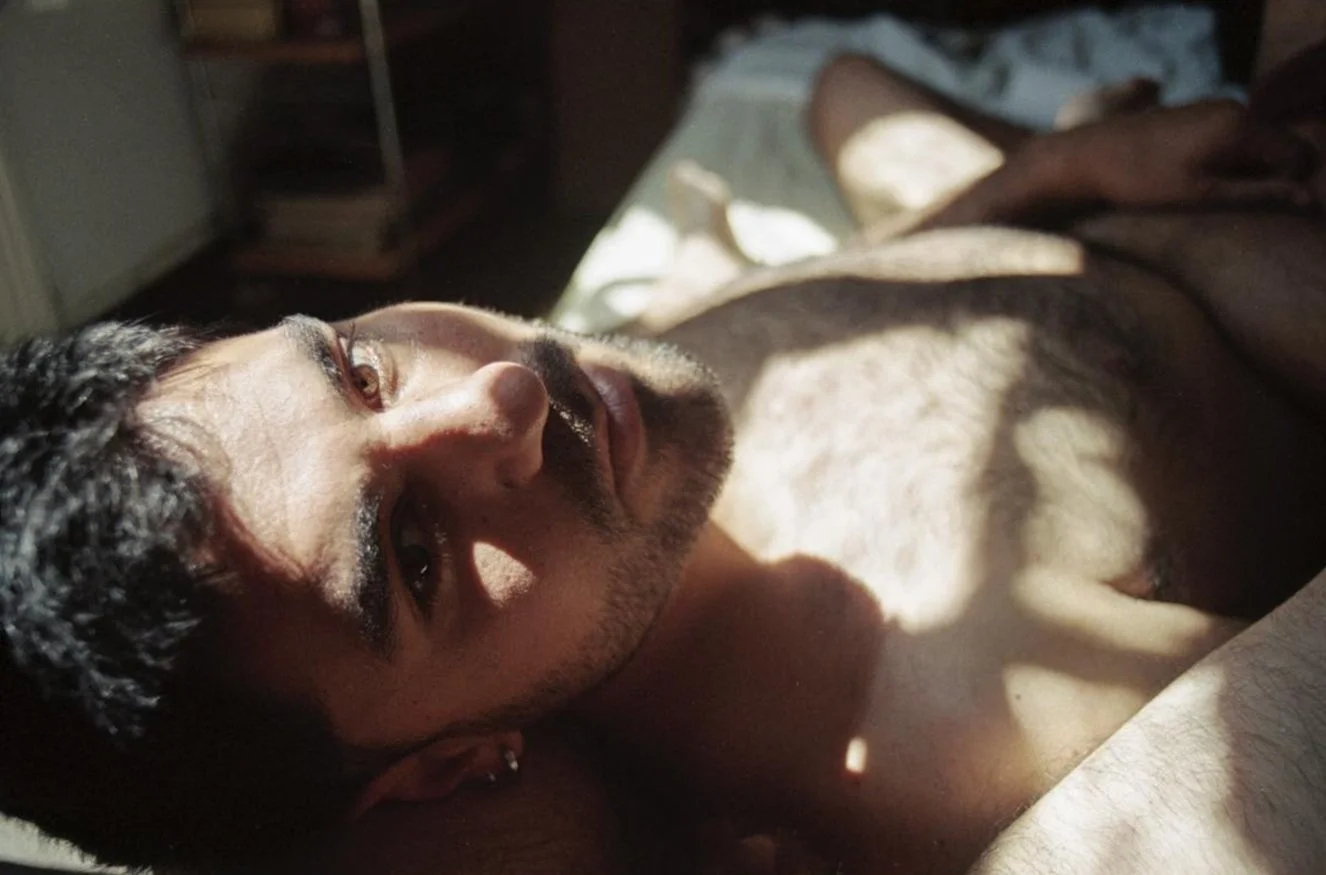Oceanic Queerness Through the Lens of Toto Guajardo
Toto Guajardo is a Chilean born photographer specialising in queer portraiture and intimate ‘bedroom’ scenes. His inviting and receptive nature allows for the authenticity of his subjects to unfold before the camera, revealing the more hidden aspects of queerness and sexuality. When we observe Toto’s photos, we observe stories of intense liberation as well as intense fear. We see queerness as an abstract concept, a concept comparable to the ebbs and flows of the ocean, or the vast openness of rolling fields. Queerness is the billow of a tulle dress, or the crash of a wave against a sharp rock: simultaneously an intimate experience and a universal one.
Lola: Hello Toto! If you could describe your photographic style in three words, what would they be?
Toto: I think the most important word to describe my work would be ‘intimacy’, and the other word would be ‘queer’, and the other word is ‘observation’. I think my work shows my ‘models’ through a kind of voyeuristic eye. I say models in quotations because I don’t work with professional models. When I find people to photograph they are always a friend of a friend, or sometimes I meet them directly, but there’s no professional models. I like to meet them and create an intimate, comfortable space between us. We work together.
Lola: That was one of the first things I noticed about your photos: a lot of your pictures take place in intimate settings like bedrooms, bathrooms and hallways. The composition is always quite close. How do you get to a level with your subjects where you can capture them in those intimate moments?
Toto: When I plan these photos, I have to get a previous arrangement with my models. I like to ask them about their lives, about what they like about their spaces and habitats, what they find comfort in. Most times I come to their houses and see their bedrooms or bathrooms and their living rooms, and we talk about it together. I think it’s a collaborative work between the model and me. I like to do it this way because I want to make them feel confident in the space so they can get comfortable for the session. Sometimes I take photos where the people are naked, so I want to get them confident in their spaces. Also, I want them to meet me. i’m not only a camera, we can create something together. I want to ask about their life, what they like and make something together. I think this is essential about my work. I can’t do this alone. I can’t take a portrait of a person without their permission.
Lola: What is your favourite photo you have taken?
Toto: My favourite photo is Valentin. Valentin is a filmmaker and he is always with his camera. I knew he had an old TV, so before the session I thought, “we can use your TV and your camera! I want this in the photo. It has to be!” When I came to his house, he told me, “hey, we painted this wall last week and now it is pink.” and I thought “ohhh this is perfect!” So we started to pick up all the pink stuff from around the house and we put it in the composition. We made a beautiful photo together. It was essential before the photo to ask about what he likes and what he does, so we could put it in the photo.
Valentin, 2020
Lola: Where did that photo get published?
Toto: It was in a collaborative exhibition in Camaralucida, which is a photography school in Valparaíso, and also it was posted in Proyectomugre, which is a company that curates street exhibitions, so this photo was exhibited on the streets in Barcelona.
Lola: Wow. How did that feel?
Toto: It was so great! I remember I was in a bar with a friend and I got the email that my photo was selected and I felt so so great because it was my first international exhibition. It’s very great to know that your work can be important in another country, to other people and so it reminded me that I’m good in what I’m doing.
Lola: You are! How would you describe the expression that Valentin is wearing in this photo?
Toto: When we took this photo, Valentin was in the middle of his transition. He was very very sad in that time. So I felt we can display his melancholic side in the image. I talked to him two years after the photo, and he told me that. This photoshoot brought him so much joy and made him feel so powerful and beautiful. His extravagance is what made me ask if he wanted to take some photos, and then we started to plan the session. It was a COVID session, during the pandemic. This was when I really focused on portrait photography, so really, he was one of my first ‘models’.
Lola: Would you say that transforming moments of sadness into moments where people feel beautiful, is a goal of your photographic work?
Toto: I want to do that. That’s what I’m looking for. Sometimes in my life I feel like I’m living in a bubble, my circle is queer and there’s joy between us, but in the real world we are not happy all the time. We are sensitive, and the real world can be hard for us. I want to show the realities of what queerness can be. I want my composition to show that there is beauty in everything. The most ugly thing to one person may be the most beautiful thing to others.
Moon, 2021
Lola: You grew up in Talca in central Chile. Tell me about your hometown.
Toto: I hated Talca. It’s such a boring city in my adolescence! And it’s a gossip city. Everyone knows what you do. I feel that I can’t be myself in Talca. I moved to Viña del Mar to study visual communication for a year, and then I moved to Valparaíso. Valparaíso is very associated with the arts. I could make a comparison to Melbourne I think. There are a lot of galleries and a lot of artists that come to live there. It’s so much fun there. When I moved to Valparaíso I was living alone, so I could finally be myself. It took until my second year into uni to really accept myself, to start wearing what I want to wear. I feel in my first year I still was ashamed. I started having problems with my family when I visited home. They started getting critical about my hair and my style, the way I talk. I had to tell them that if they are going to criticise me then I will stop coming, so they stopped. They actually learnt very well. I think now that I’ve accepted myself, I bring them joy. Before I came to Australia, my mom told me, “I love you hije”, which means he, she and they- all the pronouns. I think it’s so sweet because she’s trying it, she’s doing it.
Lola: How did you navigate your sexuality during your adolescence in Talca? Did you feel accepted by your peers?
Toto: No. I was so afraid to come out. In my adolescence, I thought I was bi, because I had girlfriends. My best friend now was my girlfriend in my adolescence. But it’s funny because we both knew we weren’t straight, so for our parents we were the ‘straight couple’, but between us, we were both doing our own crazy things. I had to study in a school for boys. if boys came out in our school, they got bullied. Some guys knew that I was kissing boys, but because I was friends with the popular girls, they didn’t bully me. I think the internet showed me a whole world outside of my family. If I didn’t have access to the internet, or if I didn’t move out of Talca, I would be a completely different person than what I am now.
LadyPussy, Valparaíso 2022.
Lola: When you hit adolescence and discovered the internet, was there a particular film or music genre or photographer that inspired you?
Toto: Yeah, Sebastian Gherre, or his nickname was Gagball. I love him. I saw his photos on Tumblr. He was riding his bike and looking for people in the street, some of them were straight guys and some of them were gay, and he wanted to take photos of them naked, in their bedrooms and houses. It’s more erotic art. I think it’s the first person I saw that was doing this kind of photos. When I grew up, I always followed his work. I still do. I love him, he’s crazy, and I love him, he’s so so so gay. I think all the queer guys know about his work and wanted him to take their photo.
Gagball, Gonzalo “mirror”, 2018. 2. Gagball, Matias Kappes Con El Pie De Su Esposo En El Pecho, 2018
Lola: You’ve mentioned your love for film/analog photography. What is your favourite part about that process?
Toto: I started film photography to work a lot on my patience. You have to be patient, because you can fail, you can really fuck it up in the dark room, so you have to be precise. The camera might not work and you won’t know until you see the final result. it’s a process that depends not all on you. So it’s a process that shows you that you have to be patient, and you have to be tolerant of failure. The best part is when you finish and everything is right, or when you shine the light behind a developing photo and it reminds you of what the photo is, because sometimes the film is developed after one month, or four months, or six months, so you start to remember the moment you shot it.
Lola: Do you have a holy-grail camera?
Toto: Yes it’s a Yashica Flex. It has two lenses, so you view it from the top. In most cameras, you put the camera against your eye, so the subject sees you. Whereas with the middle lens, they don’t see you at all because they are in line with your belly.
Valentin, 2020. 2. Edgar, 2020
Lola: A lot of your photos place a big emphasis on nature and the way that the natural environment interacts with the human subject. What is your connection with nature and how does that influence your work?
Toto: It always relates to the ocean. The ocean is a bitch, a drama queen. I think the ocean is queer. The ocean is a new thing to me because Talca is a city in a valley, so we only have hills around the city. If you travel two hours you have the sea so it’s kind of far. It’s so so so big and impressive and amazing, and dangerous and sweet. It’s magnificent. I think my admiration for the sea started in Valparaíso because it’s a big port and the city has a visual of the sea, so you see the ocean from many points in the city. I started to go to the sea and I got used to it and I started to like it, but also it scared me. Like I say it’s beautiful, and dangerous. It’s a drama queen, she is DRAMA! The sea is full of drama. In Valparaíso, the day can start sunny and then comes the fog comes over the sea and everything is cloudy and it’s dramatic. The sea erodes the paint from the walls in Valparaíso. So I see so much potential in the sea.
CÁPSULA 07 campaign for Duso
Lola: I want to talk to you about fashion. You photographed a show for Expo Arte Textil, and you also walked in the show. Tell me about that experience.
Toto: It was a good experience. When I came back to Talca, I was like the ‘new guy’ in the city. My hair was very extravagant for the city and I had met so many new people. The company asked if I wanted to walk in the expo- they didn’t ask me to take photos because they already had the staff. So when I said yes to walk it, I said what about I do the backstage, with polaroids. I cannot only walk! I have to do some photos there. It was very very fun because I was modelling undergarments and I had a pink shirt on and taking photos of all the models. It was really really fun!
Lola: What is something you wear that makes you feel totally you?
Toto: Definitely black. Oversized pants. Grandpa aesthetic. I have a bonnet- that’s definitely grandpa style.
We Are Still Hiding, 2020
Toto: Ahh this is one of my favourites.
Lola: It’s one of my favourites too. What’s the story behind this photo?
Toto: This was taken during the pandemic. This is the first photoshoot that I did. It’s my friend, Ricky. I got an idea and I told him, “Ricky, what about if we do some photos naked? Are you into it?”
both laughing
He told me yes, but he didn’t have a place in his house, so we went to the house of a friend. We went to the rooftop, and it was crazy because he was naked and there was the whole city behind us, and there was people watching. We were so inside the character when taking the photos that it didn’t matter, we didn’t care about it… Enjoy it! It was crazy, it was my first naked photoshoot.
Lola: It kind of has a hiddenness about it. He’s naked, he’s so vulnerable, but he’s also hidden behind all these layers of stairs and structures and a window. You can’t see his face, you can only see the contours of his body.
Toto: He wanted to keep his face hidden. Now, years later, we talk about it and he has processed more. He was ‘hiding’ during this part of his life. He was discovering himself, and I think the photos helped him to accept himself. I think that’s the greatest thing about these photos, you can see yourself in another perspective you have never seen before.
Lola: Speaking of being naked- you are heavily inspired by homoerotic and queer art. What sort of experiences unique to the queer community do you want to channel in your photos?
Toto: I think the vulnerability. Being naked in front of the camera, you can be so vulnerable, but you can be so powerful too. Not a lot of people that take naked photos have the disposition to do it. I photograph a lot of straight people too. I’m very good at being friends with old ladies. In the hair salon I worked at, I met Olva, the owner of the salon, and I did naked photos with her. And it was fun. It was really really really fun because we wanted to do it not so much for vulnerability, but more for her to feel powerful. Being naked and feeling powerful about her body in her sixties. She wanted to keep the memory of what her body looked like at this stage of her life.
Lola: What do you wish people understood more about photography?
Toto: I think the impact of photography. How photography can change your life. Also, everybody now has a camera in their hands (on their phones). It’s a very good way to keep memories. Everyone should take more photos. I think film photography for me is like drugs, I try to give them to my friends, I say, “here take my film camera, take some photos, I’ll develop the film you just take some photos”. I developed some film for my friend who took a camera to New York Fashion Week, and I noticed she really thought about the photos- the composition and the colours. I think everyone has this tool in their hands. I really want to teach photography one day. I did a workshop for four people, for developing photos, I want to show people so they can have the experience once in their life.
Lola: If you could share any advice to young queer people, what would that be?
Toto: Please accept yourself and don’t care about others. You are gonna grow up and nothing will matter. When I grew up and accepted myself it wasn’t until later. Now, I see that teenagers are so free and I love it. I really love it. Keep doing that. And shut up the mouth of the old guys. Don’t care about anything. Do your thing.




















